Spring is here, which means that the camping trip you could not wait to take is set to begin anytime. Of course, you have been planning to acquire your camping gear but your budget only allows for a few. Do not panic; whether you are a vet or a complete beginner, we’ got you covered! This article will take you through the process of designing the necessary DIY camping gear you will need for your camping survival.
What you should carry to your camping tour depends on the kind of trip you are engaging in. If you are taking part in a small day’s hike from a camp that is populated, you can carry a nice, big stove for your cooking needs. If you are taking part in extended tours, you will need equipment that is light and portable. Moreover, it is imperative to differentiate between backpacking and camping. Campers usually drive and camp out while backpackers hike and then camp with the equipment they have brought with them.
The gear which is suited for either of the two situations often has to do with packability and weight. Therefore, when planning your outdoor expedition, you need to consider which of the two you will spend most of your time doing.
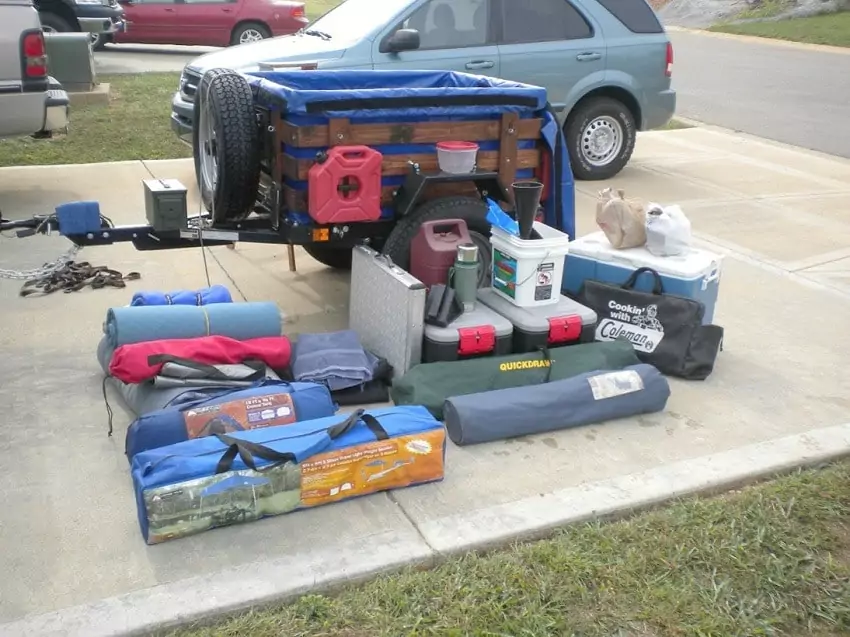
Backpacking gear is usually pricier as they focus mainly on weight, but it is perfect for backpacking and camping. However, you will need to note that it is possible to make your own camping gear and reduce the cost you would incur in acquiring new equipment.
Nevertheless, before you decide to go with a DIY approach, you will first need to consider your specific needs instead of depending on a generic checklist.
You should also remember that the right gear will make your life simpler while outdoors. Also, the perfect gear can help you save a lot of money while on a camping tour.
Crafting your DIY or homemade gear can be an excellent solution to saving money and enjoying your camping holidays without having to fear costs exceeding budget.
What You Will Require for Your Camping
Paper Maps
Irrespective of whether you are backpacking or camping, there is a perfect chance there will be no cell phone service. You will need to get a map of the location you will be camping before getting out.
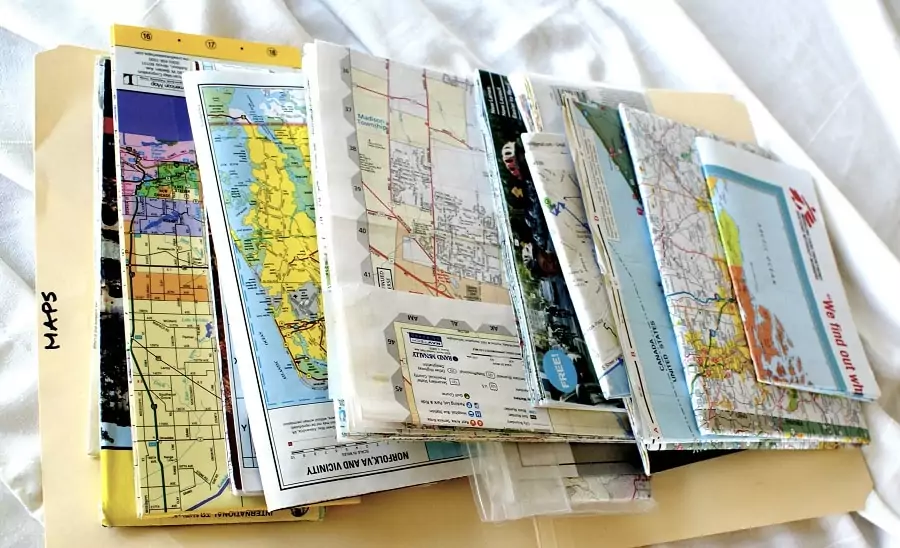
After that, learn how to read a map and do not entirely rely on GPS even when you own a portable satellite GPS unit. A map can be found at the ranger station, or you may decide to print one online. Either way, ensure you bring a map with you. Make sure you know basic map reading before embarking on your trip. Check out our article on basic map reading to stay safe during backpacking.
First Aid Kit
It should not surprise you that a first aid kit is a necessity when you are out camping.

Include the usual bandages, gauze, and aspirins, but also include some hiking-specific items such as bug sprays, moleskin for blisters, and aloe vera for cuts and burns. For a list of the things you need for your first aid kit, see our article on medical essentials to put inside your first aid kit.
Pots and Pans
If you are camping and can access to a storage truck, just use the pans and pots you already own. You do not need any special camping utensils unless you do not need to mix your camping stuff and household cookware.
Trash Bags, Dishcloths, Scrubber, and other cleaning equipment
Just because you are out in the wilderness does not mean you will not have to clean your dishes or tidy up.

Carry along some dishcloths, trash bags, and scrub brush as well. There is no magic camping-specific item here, just carry along whatever you have, and try as much as possible to leave your campsite better than it was before.
Do-It-Yourself Camping Gear
Fire Starters
Gasoline is dangerous. Dryer lint is not exactly what we always want to inhale. Twigs can get damp. Let us focus on a fire starter which is more reliable and one that is less dangerous and unhazardous to your health.
Various techniques can be used in creating homemade fire starters. One of the easiest and convenient methods involves the use of cotton balls. Simply place the balls of cotton inside the Vaseline jars, then cover the balls using a plastic bag.
When you are ready to start a fire, just use one of the greasy pieces of cotton and use it to light your fire. As a starter, the cotton will burn for a few minutes, at least two to three, giving you the time you will need to build a fire. You can use twigs, leaves, and pieces of logs to build a lasting fire.
The second and more elaborate technique for developing a fire starter is to use an empty cardboard egg carton. Fill the wells of the egg carton with small shaving and sawdust.
While on minimum heat, melt a paraffin wax in an aluminum liner (disposable pan) and pour the wax in every egg well. After these have cooled, you will have your homemade fire starters!
In addition to that, used coffee grounds and soy candle wax to make a foolproof igniter suitable for use when you have got less-than-perfect fire conditions. Additionally, it produces a great smell.
Here is how:
Collect some coffee grounds and scatter them on a cookie sheet. Bake in the oven at two-hundred and fifty degrees, or set in the sun to get rid of moisture. Place dry coffee ground into an egg carton. Cut the filters into tiny pieces, and put them on the grounds. You can also stick matches in if you have them with you.
Melt some wax and place them on each egg cup. After they have cooled, cut off one egg-cup at a time. Now you can light a filter or match and watch it burn. Place the starter under some logs or twigs to get your fire going.
Buy it alternative – when you decide to buy a starter, look for an eco-friendly option that will not produce strange odors. It’s even a plus if the starters are packed in repurposed containers such as used soda bottles. Check out our piece on the best fire starters to help you survive in the wilds.
DIY Pulks (Pulkas)
These pull-behind sleds the wintertime backcountry travel easy and fun. Moreover, they are great for carting gear or firewood. What is more interesting, you can make them with as littles as $20 with parts from the local hardware store.
Using a plastic winter sled, drill about ten holes around the sidewall of the sled. Beginning at the front corner, pass a rope through the holes, moving around the back of the sled and then towards another front corner.
Although it’s a meticulous process, guide the end of the ropes though two PVC pieces that are of relative to the length of your sled.
After you are done with threading the rope, you should be able to hand them out of the PVCs. Attach a carabiner once you have tied some loops on all ends. This can be attached on the pack’s waistband.
For an increased control, you can cross the pipes to form an “X.” Your children can sit on camp chairs in the sled. To prevent outside elements from getting on the surface of your sled, you may decide to add some extra insulation on it.
Lantern
Some little hands-free light can be achieved courtesy of a headlamp, but having a lovely lantern to offer an extra illumination is nice when you are camping, on the picnic benches, or inside the tents.
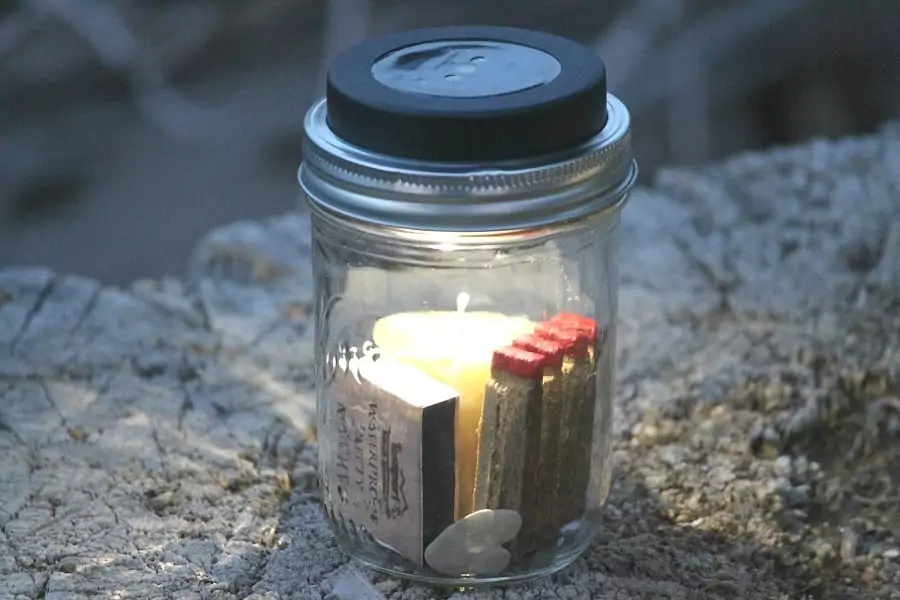
Still, people rather spend their money on items they find more interesting such as fish tacos. Chances are they probably have everything they need to create the illumination they require. However, for those looking to set up their own lanterns here’s how to go about the process:
- Fill a gallon-sized jug with water
- Slip the headlamp over the center of the jug
- Click to turn the bulb on and point it toward the jug
- Light reflection on the water will act as the lantern
Buy it alternative – When investing in a lantern, you need to make it a device that can pull double duty. There are lanterns which can charge cameras, cell phones, and GPS gadgets, and can convert into flashlight mode if required.
Dry Bags
Fold down a 2 cm hem of fabric on its edge and sew to come up with a slot. Stich at the center to create two pockets and holders for the stiffening strips.
Attach by sewing, the female and male plastic clips to the webbing, one on either ends and melt the webbing’s edge using a lighter to prevent fraying.
Again, attach the webbing (by stitching) to the pocket on the top edge, making sure the clasps dangle over the edge. Also, ensure you have a clearance that will allow you to stitch together the seams.
Make cuts all the way, following the cloth’s edge where you will attach the base. This is important as it will assist with attaching to the edge. Create tacking stitches that will aid in position the disc to the body.
Put in a webbing to help when you want to remove items from the bag; however, this is optional. Using a machine, you can then sew around the edge.
Put in the stiffeners at the top slots, taking precautions to ensure they are sufficient to allow for seams. Sew on the length to create a tube. That’s it! The bag is complete.
Bug Spray
If there is anything that can convince any die-hard camper to book a motel, it’s the swarm of bugs. High grasses, damp weather, and wetlands are conducive for bugs, but you can keep away ticks and mosquitoes with some few natural products.
Here is how:
Mix two parts of water and one part of tea oil in a spray bottle and squirt your socks, shoes, and pant cuffs to keep off ticks.
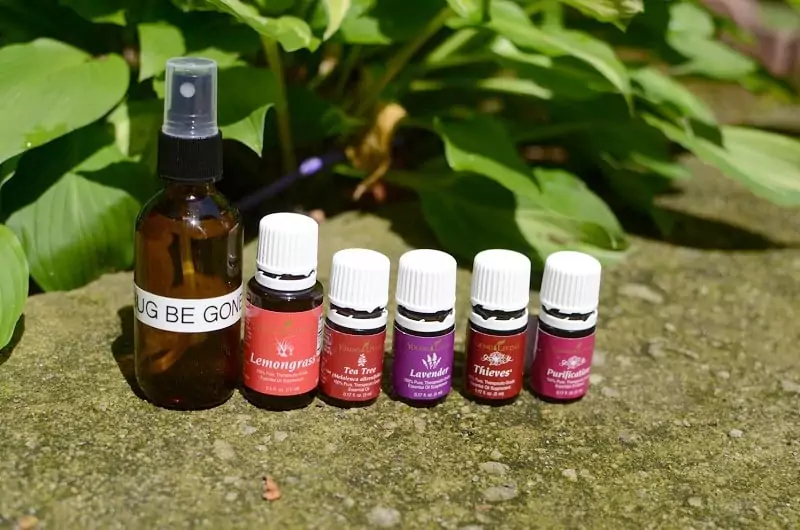
When dealing with mosquitoes, put some distilled or boiled water in a spray bottle and add witch hazel and thirty drops of essential oil such as clove, rosemary, peppermint, cinnamon, lavender, and eucalyptus (the more the oil, the stronger your spray).
If you have no oils, you can use some tablespoons of dried herbs such as cloves, spearmint, and catnip to boiling water. After that, press the herbs and then combine its resultant water with rubbing alcohol or witch hazel. Apple cider vinegar has a strong odor but is a powerful bug repellent.
Add some sage on the campfire to get a similar effect.
For instructions on the best DIY insect repellent, see our article on the topic.
Buy it effect – Pick the herb-and-oil solution, and choose a spray which will not damage your equipment or fabric.
Ice Jugs
Before going out for your camping, simply freeze some water in advance in some couple of one-gallon milk jugs or two-liter bottles. Put these in the cooler to keep the food cold. Avoid melting ice as this may keep your food soggy.
Bike Pannier Buckets
When heading out for your camping escapade, instead of buying expensive panniers for a hundred dollars or more, try bolting five-gallon square buckets to the rack of your bike.
You may be in a position to get these free-of-charge from any local restaurant, or you may decide to use some empty kitty litter buckets.
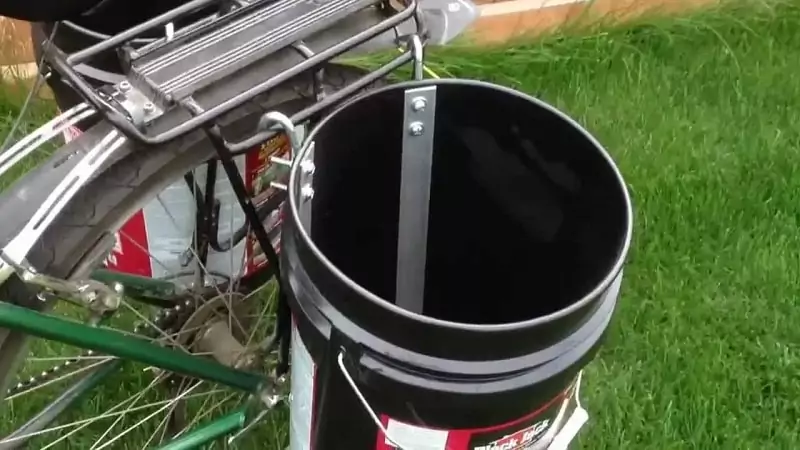
For this purpose, you will require a strong rear bike rack and some U-bolts. You will need to size these U-bolts so they are largely sufficient to go around the posts that provide support to the rack.
Place the buckets next to the rack’s frame, so the base of the top extension of the buckets are on top of the rack’s rail. Mark and make holes to create connection points for the U-bolts. With the nuts outside the rack, bolt them on.
You may decide to keep the bucket permanently attached to the rack so it can aid in transporting items such as clothes or even ice creams.
Soaps
If you are planning on rinsing off your dirt in the nearby lake or stream, it will be meaningful to hand craft some soap for your camping needs, devoid of artificial fragrances and colors so as to protect the environment.
Here is how:
- Use a cup of distilled or boiled water
- Add a few tablespoons of castile soap
- Toss in some teaspoons of essential oil such as rosemary or lavender
- Shake well until suds appear
- Toss in a soap bottle
- Since this is natural soap, you will not see a lot of lather
Buy it alternative – Buy a soap fragranced with naturally distilled products such as moss, bark, mushrooms, and other plants you may find in in an outdoor retail outlet
Rain Mitts
It is not unusual to encounter some rains while you are out camping. If you have taken part in a hike with several hours of rain and wind, you probably know how it feels to have numb fingers. It is possible to tailor a pair of rain mitts using nylon fabric to make the nasty rainy days pleasant.
DIY rain mitts resemble the oven one and can withstand rains for several hours although the gear is not entirely waterproof due to their seams.
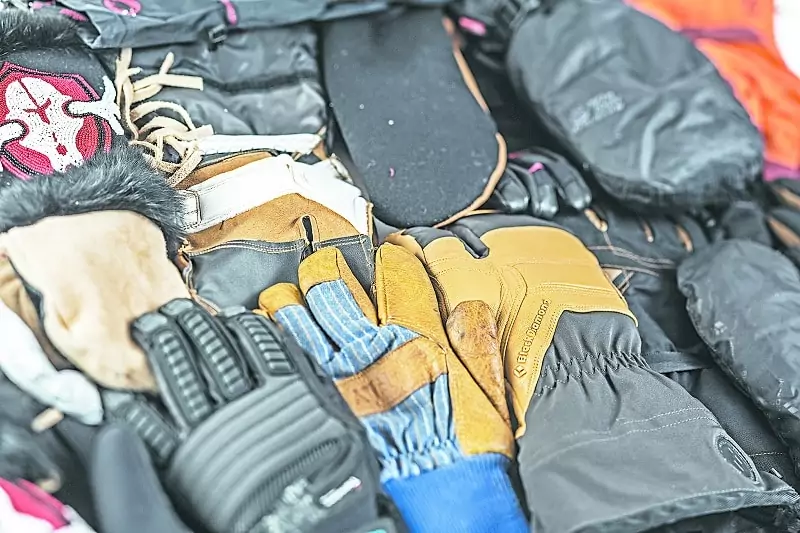
Additionally, it is important to note that homemade rain mitts can only be as useful as their constructions and materials. If quality materials are used, you will be able to create more reliable and durable mitts.
It is advisable to wear finger gloves or fleece mitts underneath the mitts. The combination of these two layers should provide sufficient protection and insulation against the cold as well as the rain.
Tip – A fully waterproof and cheap alternative would be the rubber gloves such as the ones you use when doing your dishes.
Trail Mix
The trail mix is a hiking-fuel trifecta: filling natural energy, protein, and the required caloric punch from seeds, nuts, chocolate, berries, and dried fruits. Too bad the versions bought at stores are bogged down with sodium and sugar that are not good for you.
Play it safe and make a batch of your own. This makes it possible for you to know exactly what the mixture contains.
Here is how:
Visit any pantry-style shop (those which allow you to get large scoops of candy and nuts out of plastic bags) and choose your favorite seeds, nuts, and berries.

Look for raw or dry-roasted and unsalted nuts, and keep away from the extra sugar and salt. Dried fruits are low in sugar; an excellent mix of chewy (raisins, cranberries, pineapple) and crunchy (apples, bananas) adds variety.
Add some chocolate if needed – aim for the all-natural dark chocolate – or get creative using low-fat granola, coconut flakes, oyster crackers, or pretzels. Toss them together are you are ready to go!
Buy it alternative – The portable, individually packages nut-and-fruit bars made with cranberries and pistachios are an excellent option.
Wrap Up
Camping can be cumbersome and costly if not well-thought out. However, earlier preparation can put you at a more advantageous position as far as your camping gear is concerned. Making your DIY equipment would help save a lot of money you would have otherwise used to buy items for camping.
So, have you crafted your DIY gear yet? Let us know. You can post in our comment section, and we will be ready to respond in case of any questions.

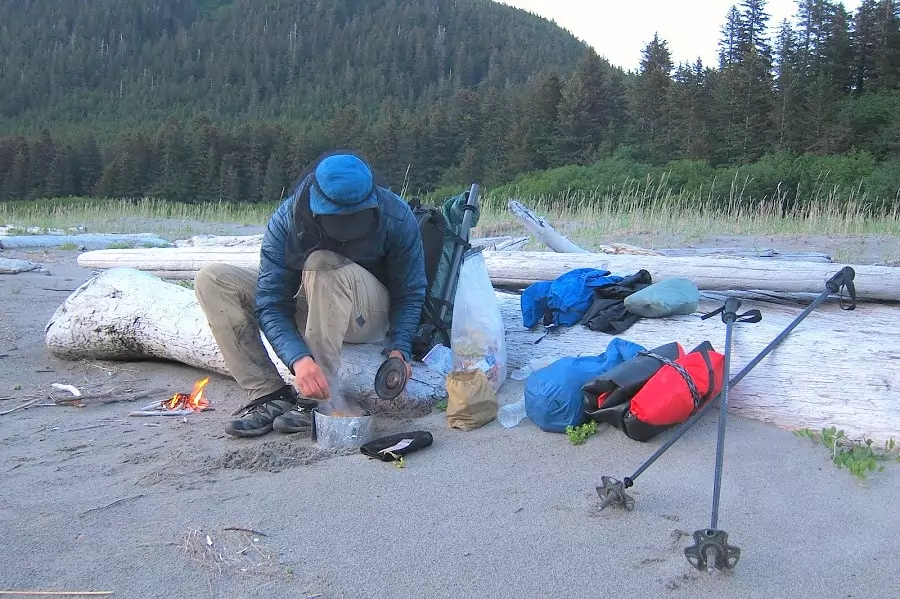


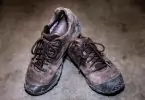

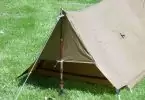

This is a really great read with excellent tips on how to save some money without compromising your camping experience. And it is a two-in-one read too. By the time you are done reading it, not only will you know some of the basic gear every camper needs but how to make it too. Who knew that making mosquito a repellent could be that simple?
Everyone can make a mosquito repellent – all you need is the right essential oil such as peppermint or eucalyptus, among others. It’s also quite an experience to mix it with the kids so they’ll appreciate the outdoors more. Easy on the budget, too compared with store-bought repellents.
I am very conscious about how much I spend on my camping necessities. I try to minimize my expenses as much as possible. This article has given me some new and practical ideas on how to cut my costs ever more by converting some regular items into good backpacking gear
Hi Peter and thanks for dropping by. I do a lot of my camping stuff, some DIY is not only easy but practical, as well. The money that I saved will be used to buy my more expensive gear, since I do invest in quality equipment.